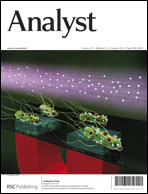Phosphorus (P) is a major cause of eutrophication and subsequent loss of water quality in freshwater ecosystems. A major part of the flux of P to eutrophic lake sediments is organically bound or of biogenic origin. Despite the broad relevance of polyphosphate (Poly-P) in bioremediation and P release processes in the environment, its quantification is not yet well developed for sediment samples. Current methods possess significant disadvantages because of the difficulties associated with using a single extractant to extract a specific P compound without altering others. A fast and reliable method to estimate the quantitative contribution of microorganisms to sediment P release processes is needed, especially when an excessive P accumulation in the form of polyphosphate (Poly-P) occurs. Development of novel approaches for application of emerging spectroscopic techniques to complex environmental matrices such as sediments significantly contributes to the speciation models of P mobilization, biogeochemical nutrient cycling and development of nutrient models. In this study, for the first time Attenuated Total Reflectance-Fourier Transform Infrared (ATR-FTIR) spectroscopy in combination with partial least squares (PLS) was used to quantify Poly-P in sediments. To reduce the high absorption matrix components in sediments such as silica, a physical extraction method was developed to separate sediment biological materials from abiotic particles. The aim was to achieve optimal separation of the biological materials from sediment abiotic particles with minimum chemical change in the sample matrix prior to ATR-FTIR analysis. Using a calibration set of 60 samples for the PLS prediction models in the Poly-P concentration range of 0–1 mg g−1 d.w. (dry weight of sediment) (R2 = 0.984 and root mean square error of prediction RMSEP = 0.041 at Factor-1) Poly-P could be detected at less than 50 μg g−l d.w. Using this technique, there is no solvent extraction or chemical treatment required, sample preparation is minimal and simple, and the analysis time is greatly reduced. The results from this study demonstrated the potential of ATR FT-IR spectroscopy as an alternative method to study Poly-P in sediments.

You have access to this article
 Please wait while we load your content...
Something went wrong. Try again?
Please wait while we load your content...
Something went wrong. Try again?


 Please wait while we load your content...
Please wait while we load your content...